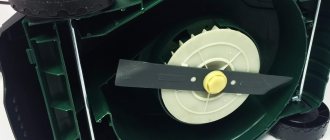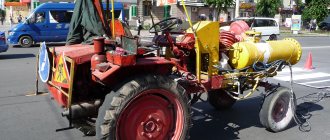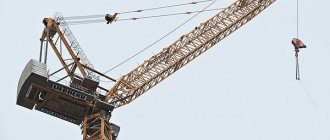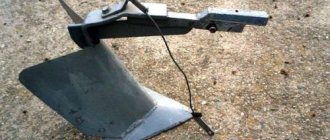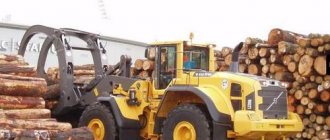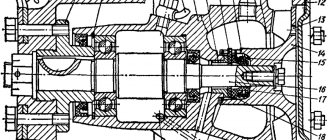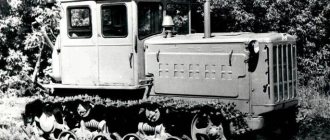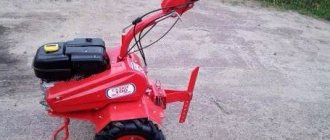Modern warehouse space is expensive, so literally every meter counts. To rationally use the useful volume, the premises are equipped with multi-level shelving systems. When installing racks, the distance between them is kept minimal - just enough for vehicles with a loaded pallet to pass through.
High-performance forklifts have been replaced by more compact stackers and reach trucks, capable of not only transporting cargo, but also lifting them to considerable heights. To operate effectively, they need a passage width of 2.7 m, and for the operation of the most compact electric forklifts, at least 3.5 m is required. Recently, this equipment has been in demand, and the demand for it is constantly growing.
Word stacker
In the English interpretation, these mechanisms are called “Stacker”. In the Russian translation it is “layer” and in the formal Russian translation it refers more likely to pipe or stack layers. The word stacker is more suited to the semantic meaning of the word “stacks” - correctly stacked loads. From here it becomes clear that a stacker is a mechanism that helps to correctly stack any cargo.
In fact, the stacker only helps lift and stack loads placed on transport pallets. The design of the pallet allows the fork lifting mechanism of the stacker to pick up the load and safely lift it to the desired height and lower it from it.
Device, design differences
With functions similar to forklifts, self-propelled stackers and reach trucks are compact in size. This is due to several reasons:
- 1. Lack of an internal combustion engine and fuel tank. They operate only from a powerful rechargeable battery.
- 2. The center of gravity is located between the support consoles, there is no need for a counterweight. This factor made it possible to significantly reduce the length of the machine.
- 3. Lack of operator's cabin. In most cases, these are models with a folding platform for the operator. Some models have open-type cabins. For good visibility, the operator position is perpendicular to the direction of the forks.
Stackers
They are a chassis with a mast along which forks with a palletized load move vertically. They come in three types: manual, semi-electric and self-propelled. In large warehouses, the most popular are self-propelled models capable of lifting cargo to a height of 5.5 m.
Reach truck
is an improved model of a self-propelled stacker. Its mast is capable of raising and lowering loads and extending forward. There is an improved carriage, thanks to which the forks move sideways and tilt.
What is the difference between an electric stacker and a loader?
This is interesting because many people confuse and do not distinguish between the mechanisms called stacker and loader. The stacker is not a vehicle. Unlike a forklift, it is not intended for transporting pallets with cargo between racks, and especially between different warehouses, even in the same territory. The loader solves these problems.
The stacker is intended only for lifting and lowering loads placed on pallets from frontal and drive-in type racks. The loader can lift/lower and transport loads over fairly long distances. In this case, raising and lowering for them is an auxiliary purpose (unloading the machine).
Related articles: What mobile buildings are needed at construction sites and enterprises
This difference is supported by the presence of two types of stackers:
- Moving stackers (manual, electric, self-propelled);
- Trailed stackers (without the ability to move independently).
If you paint an ideal picture of filling the empty front racks of a large warehouse, it would look like this.
Warehouse forklifts unload pallets from arriving trucks and transport loaded pallets from the trucks to the aisles between the racks. In the aisles, loads are placed so that a stacker can freely approach them.
Next, the operator of a manual electric stacker, controlling it, “pushes” the pallets onto the racks. For the ability of a stacker to operate between racks, the width of the passage between them and two parameters of the selected stacker are of great importance: the minimum width of the working corridor and the turning angle.
For example, JAC stackers can operate in a passage from 2575 mm, and their turning angle is from 1525 to 1655 mm (for stackers from 1 to 2 tons).
Design Features
Their reach truck wheelbase is about the same length as an electric counterbalanced forklift, but the body is more compact and lighter. The front wheels are located at the ends of the support consoles, and the drive wheel is located under the operator's station. When working, the driver usually stands or sits sideways, which improves comfort and facilitates control.
| The advantage of a reach truck is that it holds the load within the wheelbase, so the presence of the load does not increase the dimensions of the vehicle. The average aisle width with a pallet for an electric forklift with a counterweight is 3.7 m, and for a reach truck – 2.4 m. |
Types of electric stackers
Electric stackers are divided into two groups:
- self-propelled;
- slaves.
In addition, this technique is divided according to the following characteristics:
- A narrow aisle stacker is specific equipment that will be convenient in warehouses with limited space, narrow interrack passages, and so on.
- A reach truck for a warehouse is a stacker equipped with a retractable mast. Thanks to this design feature, this model is often used to service high-rise racks, the height of which can reach 13 meters.
- Pickers - the peculiarity of this type of stacker is that it is not the forks that are lifted, but the entire platform with the operator. This type of loading equipment is used for manual stacking and removal of goods onto racks.
In general, this type of loading equipment is replete with variety, and the types of stackers can be listed for a long time. It is important to know that there are universal and highly targeted models, as well as self-propelled and driven ones. In addition, there are models with rotating forks, which can be convenient in certain cases.
Electric self-propelled trolleys
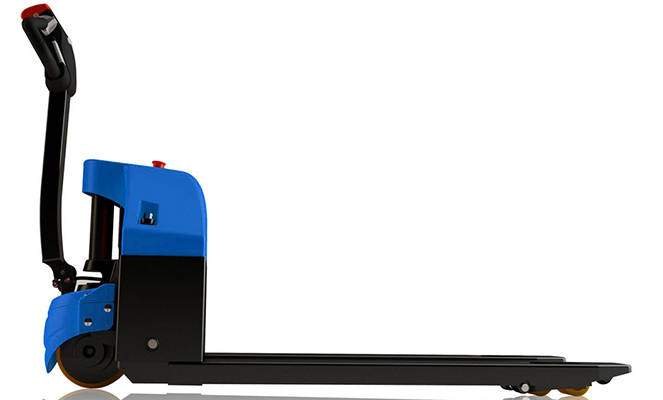
Self-propelled models, in turn, are also divided into several subtypes:
- Self-propelled followers - the operator does not have to push the cart himself, but the speed of such a model is limited by the walking speed of a person.
- Self-propelled with folding step.
- Self-propelled with a place for the operator. Moreover, there are models with a sitting or standing position. This trolley can reach speeds of up to 10 km/h.
- Self-propelled trolley - has a higher load capacity and moving speed compared to standard options.
- Self-propelled with electro-hydraulic fork lift.
As mentioned above, the variety of stackers is very wide, but if we talk about self-propelled models, then this is a more universal technique. This is due to a number of undeniable advantages:
- simplicity and ease of use;
- increased load capacity;
- ease of operation;
- speed of completing assigned tasks.
However, there is also the other side of the coin:
- The presence of a battery increases the weight and dimensions of the device.
- From time to time you will have to charge a dead battery.
Based on the above, we can conclude that a self-propelled electric stacker is an excellent choice for large warehouses and for working with large loads and high racks.
Manual electric stacker
A manual electric stacker is the same as a loading vehicle. But, unlike self-propelled guns, it is not equipped with a wheel drive. The operator has to push the cart to the desired location. And the electric drive in such models serves to lift the forks or working platform. In this regard, the carrying capacity of such models is slightly lower than that of self-propelled ones.
The manual forklift also has a number of advantages:
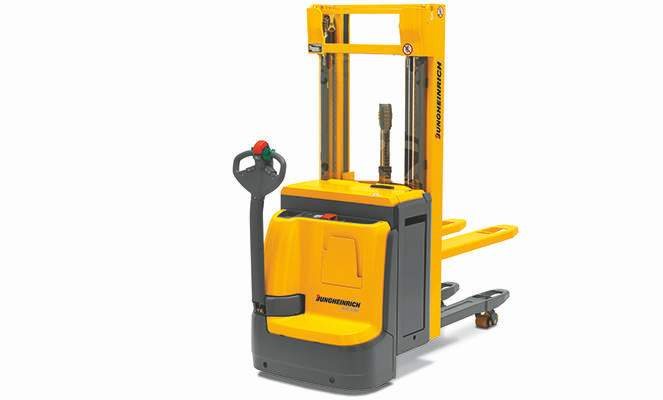
- compact dimensions;
- low cost;
- ease of operation;
- durability.
The overhead electric stacker is more often used in small warehouses or shopping centers, hypermarkets and so on.
Application[ | ]
This technique is mainly intended for lifting and lowering loads. Lifting forks are designed for various types of pallets. There are models with adjustable distance between the forks[4].
A stacker is an indispensable mechanism in a warehouse for raising/lowering loads on movable forks and moving them over short distances. At a relatively low price, stackers are capable of providing significant volumes of transported cargo and are very functional, and also do not require special training or a license [ source not specified 2422 days
].
Where warehouse space is used vertically, but the business is limited by budget, small hydraulic stackers are especially often used. They make it easier to handle pallets in small warehouses and small shops. All-electric stackers - electric stackers - are significantly more productive. If the stacker is self-propelled (with a specially equipped operator’s seat), then its speed increases to 8-10 km/h. Such stackers have a large lifting height (up to 4-6 meters) and can work up to two shifts without recharging. High-rise stackers have the ability to lift loads to a height of up to 12 meters, with a very small distance between the racks - up to 2.6 meters. High-rise stackers have a high load capacity - up to 2.5 tons, as well as high speed - up to 10 km/h.
Stackers are essential equipment for any warehouse where cargo is stored on pallets. Currently, there are many types and models of warehouse equipment on the lifting equipment market: manual hydraulic stackers, self-propelled driven stackers, electric stackers, reach trucks. Each type of lifting warehouse equipment is designed for specific operating conditions. Using a stacker in a warehouse is only possible if the floors are of high quality.
Stackers are used to perform intra-warehouse work on transporting and stacking cargo pallets. All types of stackers can be divided into three groups: manual hydraulic stackers; self-propelled driven stackers; electric stackers.
The main parameters taken into account when choosing stackers are:
- The turning radius (Wa) affects the width of the working aisle in which the equipment must work.
- Working aisle width (AST). The parameter is indicated taking into account work with a pallet 800*1200 along the forks, or with a pallet 1000x1200 across the forks. Determines the minimum space required for work and load handling. Measured in mm. That is, with AST = 3000 mm, the equipment can operate with a passage width of 3 meters or more, although Wa can be 2000 mm.
- Residual lifting capacity - due to the design features, the lifting capacity of the stacker decreases with the height of the mast. Therefore, when choosing a stacker, they usually focus on the maximum weight of the load at the maximum height.
- Battery type and capacity - there are two main types: alkaline (currently practically not used) and acid. Acid ones, in turn, are divided into starter (as in passenger cars) and traction (from 100 Ah). The battery capacity affects the operating time - the larger the capacity, the longer the equipment will work; and on the residual lifting capacity (other things being equal, a pump with a more powerful battery can create greater operating pressure in the lifting hydraulic system).
In addition, in various situations, important parameters may be: the construction height of the stacker (height “in the light”), the width of the carriage (for a Euro pallet or an industrial pallet), vertical lifting speed, horizontal speed, method of replacing batteries, etc.
Types of reach trucks
There are three main types of these machines:
- with a movable mast;
- with pantograph mechanism;
- with wide consoles.
The first type of reach truck uses a hydraulic system in which the mast moves back and forth along rail guides. The main disadvantage of these machines is the inability to work with double-depth racks without installing a fork extension.

Pantograph reach trucks are equipped with a scissor mechanism that extends the forks. These machines are capable of working with double-depth racks and feeding loads into the truck body from the side. They are distributed mainly in the USA and Canada.
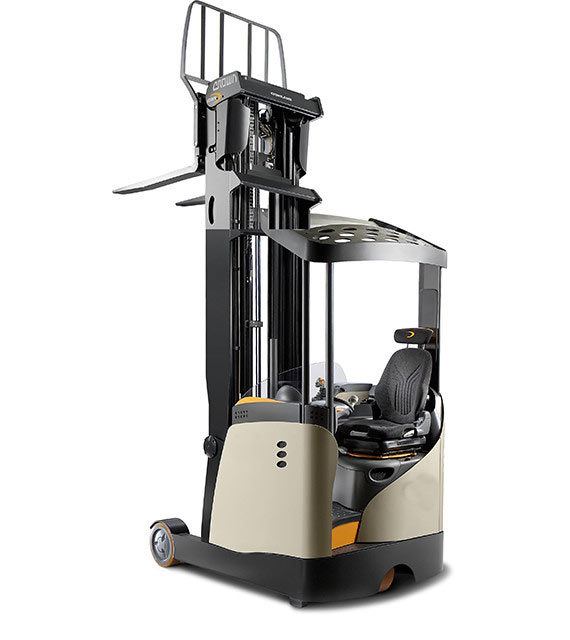
Separately, it is worth mentioning leash mini-reach trucks. They lack a fixed position for the operator, which makes them very compact but limits productivity. Such machines move at walking speed, but are cheap and do not require much space to operate.
Reach trucks with wide consoles are able to drive up to a pallet so that it is completely between the consoles. These machines are rare because they require the pallets to be spaced some distance apart.

